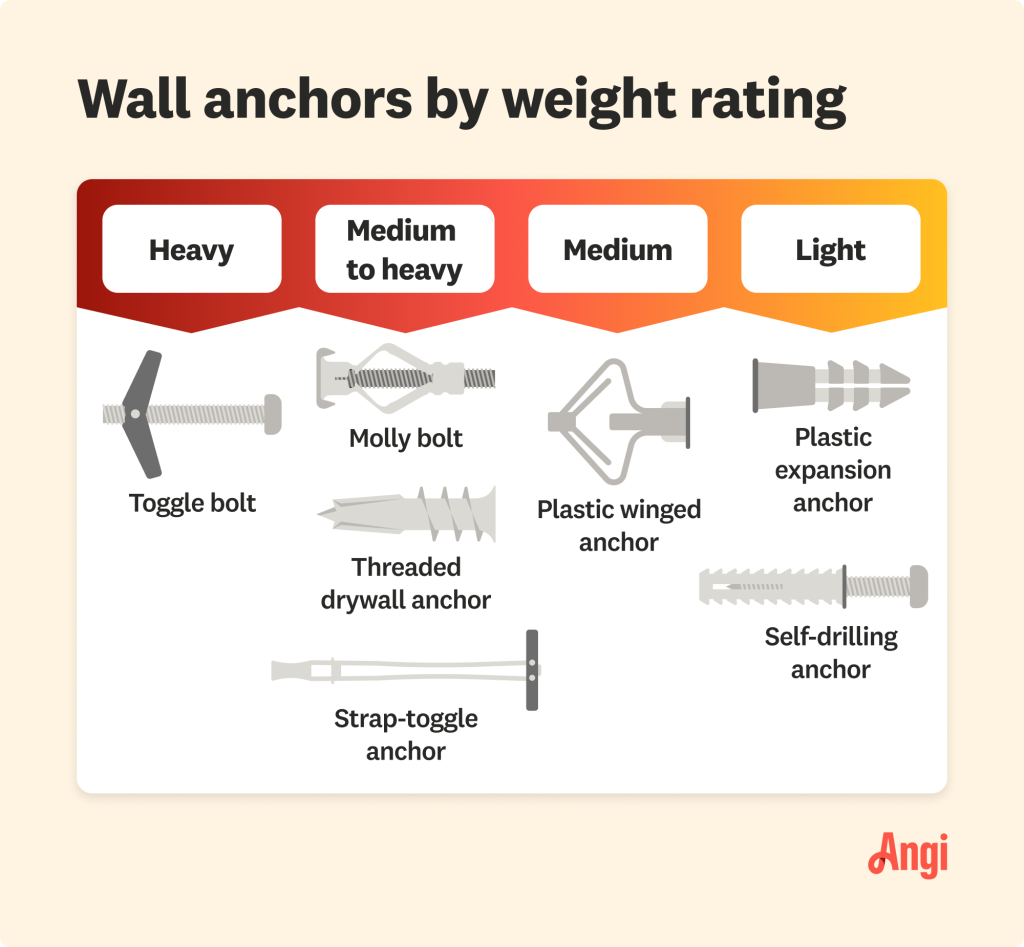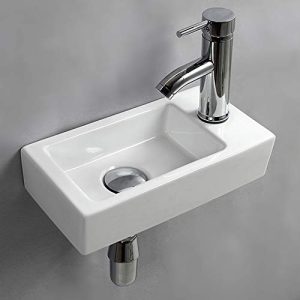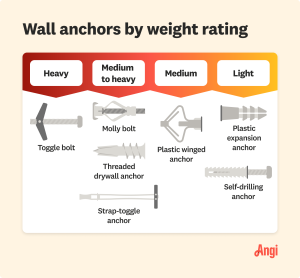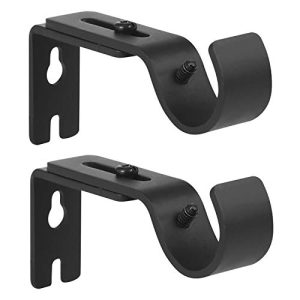Are you tired of struggling to hang heavy objects on your walls without worrying they’ll fall? Using the right drywall anchor can make all the difference.
But with so many types and sizes, it’s easy to feel lost. This guide will show you exactly how to use a drywall anchor to securely hold your heaviest items, step by step. By the end, you’ll have the confidence to hang shelves, mirrors, or art without fear.
Keep reading—your walls will thank you.

Credit: www.mount-it.com
Choosing The Right Anchor
Choosing the right drywall anchor is key to hanging heavy objects safely. Using the wrong anchor can cause damage to your wall or make your item fall.
Look at the weight, wall material, and anchor type before you start. This helps you pick the best anchor for your needs.
Types Of Drywall Anchors
Different anchors work best for different weights and wall types. Some anchors screw into the drywall, while others expand behind it.
- Plastic expansion anchors: good for light loads
- Self-drilling anchors: easy to install and hold medium weight
- Toggle bolts: strong anchors for heavy objects
- Molly bolts: expand inside wall for firm grip
Weight Capacity Considerations
Check the weight your anchor can hold before buying. Each anchor has a weight limit listed on the package.
It is safer to pick an anchor that holds more than your item’s weight. This prevents accidents and wall damage.
- Light anchors hold up to 10 pounds
- Medium anchors hold 10 to 50 pounds
- Heavy-duty anchors hold over 50 pounds
Material Compatibility
Some anchors work better with certain wall materials. Drywall thickness and type affect anchor choice.
Use anchors made for drywall if your wall is standard. For plaster or thicker walls, pick anchors designed for those materials.
- Plastic anchors: best for standard drywall
- Metal anchors: good for plaster and thicker walls
- Toggle bolts: work well on hollow walls
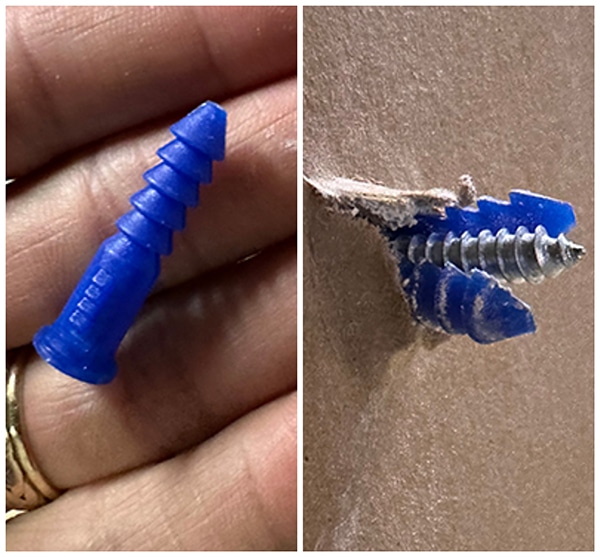
Credit: www.artofmanliness.com
Preparing The Wall
Using a drywall anchor is essential for hanging heavy objects securely. Before beginning, ensure the wall is ready for the task.
Follow these steps to prepare your wall properly, ensuring a safe and sturdy installation.
Locating Studs And Marking
Finding a stud is the first step in preparing the wall. Studs provide extra support for heavy objects.
Use a stud finder to locate the studs in your wall. Mark their positions with a pencil.
Measuring And Marking Drill Points
Next, measure the distance between the anchor points on the object you want to hang. Mark these points on the wall.
Ensure the marks are level with each other for a balanced installation.
Checking For Electrical And Plumbing
Before drilling, check the wall for electrical wires and plumbing. Avoid hitting these to prevent damage and hazards.
Use a wire detector to ensure there are no obstacles behind the wall surface.
- Scan the wall with a wire detector tool.
- Mark any areas with wires or pipes.
- Avoid drilling in these marked areas.
Installing The Anchor
Installing a drywall anchor correctly helps hold heavy objects safely. Follow clear steps to avoid damage and ensure strength.
This guide explains how to install drywall anchors with care and precision.
Drilling The Pilot Hole
First, mark the spot where you want to place the anchor. Use a drill bit that matches the anchor size.
Drill a straight hole into the drywall. Keep the hole clean from dust and debris.
- Use a drill bit slightly smaller than the anchor diameter
- Drill slowly to avoid cracking the drywall
- Clear the hole with a brush or air blower
Inserting The Anchor Correctly
Push the anchor into the pilot hole until it is flush with the wall surface. Do not force it.
If the anchor has wings or expanding parts, make sure they stay folded while inserting.
- Align the anchor straight to the hole
- Tap gently with a hammer if needed
- Stop when the anchor sits flat on the wall
Securing The Anchor Firmly
Insert the screw into the anchor and tighten it slowly. The anchor will expand inside the wall.
Do not overtighten the screw. Stop when the anchor feels secure and the object is stable.
- Use a screwdriver or drill with low torque
- Check the object is steady after tightening
- Do not force screws beyond the anchor’s limit
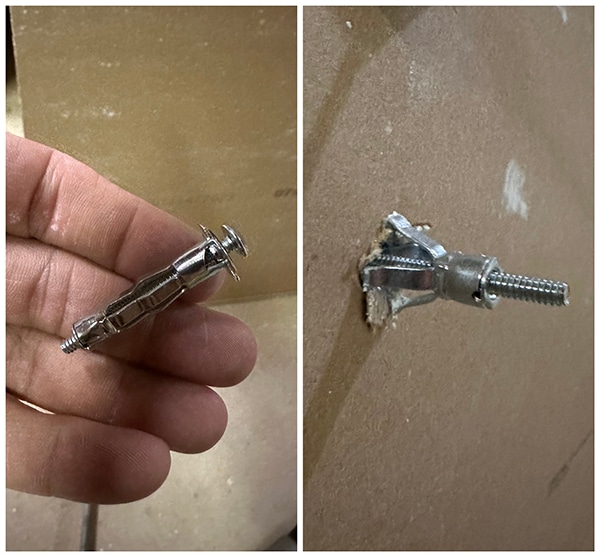
Credit: www.artofmanliness.com
Mounting Heavy Objects
Mounting heavy objects on drywall needs strong support. Drywall anchors hold the weight safely.
Using the right anchor and screws helps keep your items secure. Follow steps carefully for best results.
Choosing The Right Screws
Pick screws that fit your drywall anchors. The screw should match the anchor size for a tight hold.
Use screws made from strong materials like steel. Avoid thin or short screws that may fail.
- Check anchor instructions for screw size
- Use screws long enough to go into the wall stud or anchor
- Choose corrosion-resistant screws for durability
Aligning The Object
Align the object on the wall before drilling. Mark the spots to place anchors evenly.
Use a level tool to keep the object straight. Proper alignment prevents stress on anchors.
- Measure the distance between mounting holes
- Mark wall points with a pencil
- Double-check marks with a level
Distributing Weight Evenly
Spread the weight by using multiple anchors. This reduces pressure on each anchor point.
Place anchors at stable points on the wall. Avoid putting all weight on one anchor.
- Use two or more anchors for heavy items
- Space anchors evenly along the mounting area
- Check the weight limit of each anchor
Safety Tips And Common Mistakes
Using drywall anchors is a smart way to hang heavy objects on walls. You must follow safety tips to avoid accidents.
Common mistakes can cause damage to your wall or make anchors fail. Learn how to use anchors correctly.
Avoiding Overloading
Check the weight limit of your drywall anchor before use. Do not hang objects heavier than the limit.
Overloading anchors can cause them to pull out or break, risking damage or injury.
- Use anchors rated for the object’s weight.
- Distribute weight across multiple anchors if needed.
- Do not guess the weight limit; read the packaging.
Preventing Wall Damage
Drill the correct hole size for your anchor. Too big or too small holes cause weak holds or cracks.
Insert anchors gently. Forcing them can break the drywall or the anchor itself.
- Use a level to mark anchor spots evenly.
- Do not hammer anchors hard into the wall.
- Check for wires or pipes behind the wall before drilling.
Troubleshooting Loose Anchors
If an anchor feels loose, remove it and check the hole size. Holes that are too large cause loose anchors.
Try a larger anchor or use a different type like toggle bolts for better grip.
- Do not reuse a hole without repairing it.
- Fill large holes with drywall compound before reinstalling anchors.
- Test the anchor by gently pulling before hanging the object.
Frequently Asked Questions
What Types Of Drywall Anchors Support Heavy Objects?
Heavy-duty anchors like toggle bolts, molly bolts, and metal anchors support heavy items. Choose based on wall thickness and object weight for secure mounting.
How Do I Install A Drywall Anchor Correctly?
Drill a hole matching anchor size, insert anchor flush with the wall, then screw in the fixture. Follow manufacturer instructions for best results.
Can Drywall Anchors Hold Heavy Shelves Safely?
Yes, heavy-duty drywall anchors can hold shelves if installed properly. Always check the anchor’s weight rating against your shelf load.
What Weight Can A Drywall Anchor Typically Hold?
Weight capacity varies by anchor type, usually from 20 to 100+ pounds. Use anchors rated above your object’s weight for safety.
Conclusion
Using a drywall anchor helps you hang heavy items safely. Choose the right anchor for your wall and weight. Drill a hole, insert the anchor, and screw it in. Take your time and follow each step carefully. This method keeps your walls strong and prevents damage.
Now, you can hang shelves, mirrors, or TVs with confidence. Simple tools and clear steps make the job easy. Give it a try, and enjoy your secure, sturdy wall hangings.


